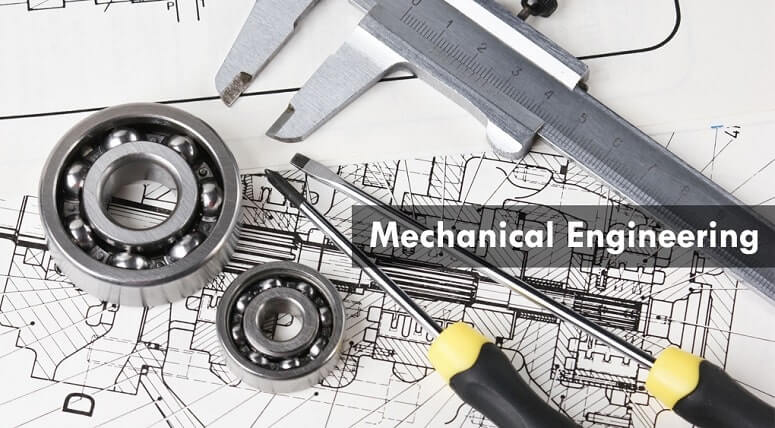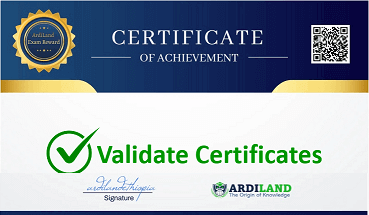Mechanical Engineering Exit Exam Practice Exam
in University Exit ExamWhat you will learn?
The Comprehensive Mechanical Engineering Exit Exam aims to assess the students' comprehension of the core knowledge areas of Mechanical Engineering.
About this course
This exam has been designed for undergraduate Ethiopia university and college students specializing in mechanical engineering to assess their mastery of the core concepts of the field. The exam has been structured to comprehensively cover all the essential knowledge areas of mechanical engineering.
The exam kicks off with an introduction module covering the fundamental principles, concepts, and terminologies that form the foundation of mechanical engineering. The second module delves into the study of thermodynamics, heat transfer, and fluid dynamics. The third module is dedicated to the study of materials science and engineering and focuses on the properties of materials and their applications in mechanical engineering.
The fourth module is centered on the study of mechanical design, engineering mechanics, and dynamics. This module focuses on the principles and practices of design, kinematics and dynamics of particles and rigid bodies, and the nature of mechanical loads, including vibrations. The fifth module reviews statics and mechanics of materials. It aims to familiarize students with the principles of mechanics of materials and develop an understanding of the stresses, strains, deformation, and failure modes of engineering structures and materials.
The sixth module covers manufacturing processes, including casting, molding, forming, and machining. It also focuses on emerging technologies like additive manufacturing and computer-aided manufacturing. The seventh module capstones the exam with engineering economics, ethics, and professional practices.
Requirements
The requirements for the Comprehensive Mechanical Engineering Exit Exam include a device with reliable internet access and a valid student ID or exam entry ticket.
FAQ
Comments (0)
a broad discipline that encompasses the design, analysis, manufacturing, and maintenance of machines and systems.
concepts and terminologies that are important in Lesson 2 of the Introduction to Mechanical Engineering course.
The field of mechanical engineering is constantly evolving, and there are many opportunities for innovation and creativity.
understand how energy and matter interact in the real world.
The process of exchange of thermal energy between physical systems due to a temperature difference
The study of the motion of fluids.
Arrangement of atoms and molecules in a material.
The properties of a material that are determined by its structure.
Materials science and engineering is used in a wide variety of engineering disciplines, such as civil engineering, mechanical engineering, and chemical engineering.
The key principles of design include function, form, economy, durability, and safety.
Kinematics and dynamics are the two main branches of mechanics that study the motion of particles and rigid bodies. Kinematics is the study of motion without considering the forces that cause the motion, while dynamics is the study of motion considering the forces that cause the motion. We use Newton's laws of motion to describe the forces that act on particles and rigid bodies. We also study work, power, momentum, and angular momentum. Rigid bodies are bodies that do not deform under the action of forces. We study translational motion, which is the motion of a rigid body in which all points of the body move in parallel lines, and rotational motion, which is the motion of a rigid body about an axis of rotation.
Mechanical loads are forces that act on a body and cause it to deform or change its motion. There are four main types of mechanical loads: static, dynamic, impact, and cyclic. The effects of mechanical loads can be deformation or failure. To design for mechanical loads, it is important to select the right materials, design the body to be strong, and provide for load distribution. It is also important to consider the environment in which the body will be used and to test the design.
Mechanics of materials is the study of how materials deform and fail under the action of loads. Stress and strain are the two main quantities used to describe the behavior of materials under load. Hooke's law states that the stress in a material is proportional to the strain in the material. Elasticity is the ability of a material to return to its original shape after the application of stress is removed. Plasticity is the ability of a material to permanently deform after the application of stress. Yield strength is the stress at which a material begins to plastically deform. Ultimate strength is the maximum stress that a material can withstand before it fails.
Discuss the different types of stress and strain, as well as the relationship between them. It also introduces the concepts of elasticity, plasticity, yield strength, and ultimate strength. These are all important concepts to understand when analyzing the behavior of materials under load.
Discuss the different types of failure that can occur in engineering structures, as well as the factors that affect them. It also introduced the concept of design for failure, which is the goal of preventing failure of engineering structures by selecting the right materials, designing the structure to be strong and ductile, avoiding stress concentrations, and considering environmental factors.
Discuss the casting and molding processes, which are important manufacturing processes that are used to produce a wide variety of parts. These processes are versatile and can be used to produce parts with a wide range of properties. The quality of the mold will have a significant impact on the quality of the cast part. Molds must be made to very precise tolerances, and they must be able to withstand the heat and pressure of the molten material.
Discuss the forming and machining processes, which are two important manufacturing processes that are used to shape materials. Forming processes involve the permanent deformation of a material, while machining processes involve the removal of material from a workpiece. The choice of forming or machining process will depend on the specific requirements of the part being produced.
Discuss emerging manufacturing technologies, which are those that are still in the development or early adoption stages. These technologies have the potential to revolutionize manufacturing, but they are not yet widely used. Some of the most promising emerging manufacturing technologies include additive manufacturing (AM), robotics, simulation, and big data. These technologies have the potential to make manufacturing more efficient, flexible, and productive. They can also be used to produce parts with new and improved properties. The adoption of emerging manufacturing technologies is still in its early stages, but it is growing rapidly. As these technologies mature, they are likely to have a major impact on the manufacturing industry.
Discuss the fundamentals of engineering economics, which is the application of economic principles to engineering decisions. Engineers use engineering economics to evaluate the costs and benefits of different engineering projects and to make decisions about which projects to undertake. Some of the key concepts in engineering economics include the time value of money, discounting, return on investment (ROI), and payback period.
Discuss engineering ethics, which is the application of ethical principles to engineering practice. Engineers have a responsibility to act in a responsible and ethical manner, and they should be aware of the ethical challenges that they may face. Some of the most common ethical issues that engineers face include conflicts of interest, safety, environmental impact, and intellectual property.
Discuss professional practices, which are the standards of conduct that are expected of engineers. Professional practices help to ensure that engineers provide high-quality work and that they act in a responsible and ethical manner. Some of the most common professional practices that engineers follow include keeping up-to-date with the latest engineering knowledge and standards, documenting their work carefully, consulting with other engineers when necessary, working safely and ethically, and providing the public with accurate information about their work.









